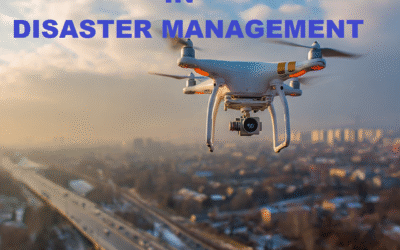Disaster Management in Schools: Preparedness and Project Ideas
School disaster management is an important aspect of ensuring the safety of students, teachers, and school staff during emergencies, and so schools
need to have proper strategies.
To begin with, school disaster management provides information on evacuation paths, emergency actions, and responsibilities in maintaining safety, thus
confusion is reduced in times of crisis.
Further, frequent drills and awareness campaigns consolidate school disaster management and thereby students learn to react promptly in case of
earthquakes, fires, or flooding.
Second, schools can incorporate innovative projects like hazard maps or emergency kit design so that learning improves, and along the way, they
establish a culture of readiness.
Moreover, coordination with local agencies and community groups facilitates disaster management within schools, and hence, schools are better equipped
for actual events.
In the end, proper disaster management in schools not only saves lives but also educates children with life skills that can be applied beyond the
classroom.
Importance of Disaster Management in Schools
Disaster management holds great importance in schools; therefore, every institution must prioritize it to protect students and staff.
First, schools gather large numbers of children daily, and as a result, they remain vulnerable during emergencies like earthquakes, fires, or floods.
Moreover, children often panic in crises, and consequently, proper training helps them stay calm and follow safety instructions.
Secondly, disaster management enables teachers and staff to be aware of their roles and hence, can direct the students in a quick and safe manner.
Also, preparedness plans save lives and reduce injuries while at the same time decreasing school property damage.
Additionally, disaster management activities raise awareness, and as such, students learn life-saving skills that go beyond the classroom.
Therefore,
Incorporating disaster management into school policies and procedures not only protects their community but also readies the future generation to endure
emergencies in a courageous and responsible manner.
11 Points You Must Include In Your Disaster Management Project On Climate Change
School Disaster Preparedness Plan: Key Elements
A school emergency preparedness plan should have well-defined strategies; thus, it is inevitable for safety during emergencies.
To begin with, schools should identify areas of possible risks such as earthquakes, fires, floods, or chemical spills, and consequently, they can make
specific arrangements accordingly.
Further,
they should make evacuation paths and visibly post them on walls of classrooms and corridors, and as a result, students can safely exit in case of
emergencies.
Secondly, the plan has to designate the role of teachers, staff, and student leaders, and hence responsibility is clear in times of crisis.
In addition to this, schools ought to keep emergency kits with first aid, water, and essential supplies, and concurrently update these from time to time.
Finally,
holding mock drills and safety workshops enhances preparation, and hence students become confident in managing disasters.
Therefore, an effective preparedness plan not only reduces risks but also enhances the resilience of the entire school community.
Project On Tsunami: 13 Pages You Must Include In Your Disaster Management Project
Disaster Management in School: Role of Teachers and Students
First, the teachers sensitize students to disasters, and thus, students understand the significance of preparedness.
Additionally, teachers organize safety drills, and as such, students learn to respond calmly in times of crisis.
Secondly, teachers take students through the development of hazard maps, and therefore, they are able to locate dangerous areas within schools.
Additionally, teachers impart first aid skills, and as such, students become confident to help during crises.
In addition, students are actively involved in awareness activities, and simultaneously, they exchange safety information with families and peers.
Teachers organize coordination with local authorities, and because of this, schools are provided with disaster response expert advice.
Students make emergency kits as part of class assignments, and as a result, they remain prepared to utilize them in real-time.
Teachers induce students to devise posters, skits, or models, and thereby, they convey disaster awareness in innovative ways.
Additionally, students serve as peer leaders in drills, and thus they lead younger students to safety.
Lastly, teachers and students collaborate, and thus the school creates a culture of resilience and preparedness.
Disaster Drills and Safety Practices
First, schools practice routine fire and earthquake drills, and accordingly, children learn to react in time.
Secondly, teachers inform students about safety procedures in advance, and thus, students respond confidently to instructions.
Thirdly, schools designate evacuation routes in clear markings, and hence, children are able to leave buildings without getting confused.
Finally, teachers designate safety leaders in every class, and hence, duties stay well-coordinated.
In addition, schools have safe assembly in open spaces, and simultaneously, attendance is taken.
Teachers also instruct students in drop-cover-hold methods in case of earthquakes, and thus injuries decrease tremendously.
Simultaneously, schools provide fire extinguishers and alarms, and thus they stay prepared for actual emergencies.
In addition, schools promote first aid training sessions, and as such, students are able to help if someone is injured.
Moreover, schools also conduct mock disaster situation exercises, and therefore, students acquire actual problem-solving skills.
Lastly, teachers discuss drills after they are finished, and thereby, students enhance their response in subsequent practice.
Top Disaster Management Project Ideas for Students
Creating Hazard Maps
To begin with, students can make hazard maps of the school or neighborhood, and thus they can map out vulnerable areas and propose alternative routes.
Designing Emergency Kits
Additionally, students can design and exhibit emergency kits, and thus they can emphasize the need to have first aid, water, and basic supplies readily
available.
Conducting Mock Drills
Secondly, students can conduct mock drills on fire, earthquakes, or floods, and hence, they can showcase prompt response and evacuation with safety.
Construction of Disaster Awareness Models
Further, students can make functional models illustrating flood control systems, earthquake-resistant structures, or fire protection equipment, and hence,
they can exhibit viable solutions.
Conducting Awareness Campaigns
Lastly, students can have campaigns in the form of posters, street plays, or through social media, and simultaneously promote awareness regarding
disaster preparedness.
Collaborating with Local Authorities for Safety
Hold Joint Safety Drills
To begin with, schools can request local fire, police, and medical crews to stage joint drills, and thus, students are exposed to real-life emergency training.
Exchange Risk Assessments
Additionally, schools can exchange their hazard maps and safety manuals with authorities, and thus, they obtain expert guidance to enhance
preparedness.
Host Safety Workshops
Then, local governments can organize safety workshops in schools, and thus, teachers and students acquire hands-on experience from experts.
Establish Contact Lines
Apart from that, schools may establish direct contact lines with police stations, fire stations, and hospitals and, as a result, can respond more quickly in
case of emergency.
Join Hands for Awareness Drives
Lastly, schools can join hands with authorities to organize awareness rallies, posters, and community projects, and simultaneously they can propagate
safety culture outside the classroom.
Disaster Management in Schools: Preparedness and Project Ideas
FAQs
Why is disaster management crucial in schools?
Disaster management saves lives of students and employees, and therefore, schools can have effective responses in the event of emergencies.
What are the most important components of a school disaster readiness plan?
A good plan contains identification of hazards, evacuation procedures, designated roles, emergency supplies, and frequent drills.
How can teachers help in disaster management?
Teachers perform drills, educate students on safety protocols, and lead students, and therefore, they ensure efficient responses.
What is the responsibility of students in disaster management?
Students do drills, work on projects, and raise awareness, and simultaneously, they practice problem-solving.
How can schools organize efficient disaster drills?
Schools schedule periodic drills, designate leaders, and practice procedures, and thus students learn to remain calm and safe.
Why must schools work in coordination with local authorities?
Cooperation provides expert advice, timely assistance, and improved resource utilization during crises.
What are some project ideas for students?
Students can design hazard maps, create emergency kits, organize awareness campaigns, and prepare safety posters.
Conclusion: Creating a Culture of Preparedness in Schools
Disaster management in schools is still necessary to guarantee the safety and wellbeing of students and employees; thus, schools are responsible for
prioritizing readiness and preventive measures.
To begin with, disaster management in schools focuses on grasping why it is essential, and consequently, administrators and educators acknowledge the
necessity for well-defined strategies.
Further, the emphasis on major aspects of a school disaster plan ensures evacuation routes, emergency supplies, and responsibilities are properly
defined, and as such, all individuals know how to respond during emergencies.
Secondly, teachers’ and students’ roles enhance preparedness and promote active engagement via drills, sensitization programs, and hands-on projects.
In addition, performing effective disaster drills and safety routines and putting project concepts into action enable students to learn hands-on, and
cooperation with local government enhances response effectiveness.
Therefore, disaster management in schools develops a culture of preparedness, resilience, and responsibility.





0 Comments